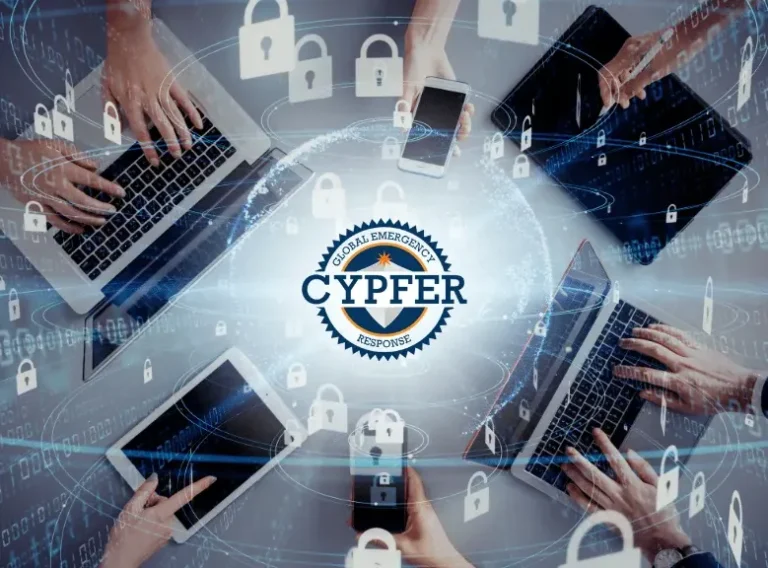In today’s hyperconnected digital world, businesses of all sizes face an ever-evolving threat: cyberattacks. These attacks don’t discriminate; whether you’re a startup, a small family-run business, or a global corporation, you’re a potential target. Cybercriminals are constantly refining their tactics, exploiting vulnerabilities, and aiming to steal sensitive information, disrupt operations, or demand ransoms. For many companies, a single successful cyberattack can lead to financial loss, reputational damage, or even permanent closure.
Despite these risks, countless businesses remain unprepared, assuming they’re too small to be a target or that basic security measures are enough. This mindset leaves them dangerously exposed. The good news? Protecting your company from cyberattacks doesn’t require an endless IT budget or a dedicated cybersecurity team. With a clear understanding of the risks and a proactive approach, you can build a strong defense that safeguards your company’s assets and future.
This article outlines ten essential strategies every business owner can implement to reduce the risk of cyberattacks and ensure business continuity. From employee training to leveraging advanced tools, these tips will help you secure your company’s digital footprint effectively.
1. Train Employees in Cybersecurity Awareness
Your employees are the first line of defense against cyber threats—and potentially the weakest link if untrained. Many cyberattacks, such as phishing schemes and social engineering scams, specifically target employees. Teaching your team to recognize these threats can significantly reduce risk.
- Recognize Common Threats: Provide training on identifying phishing emails, fake login pages, and malicious links. Employees should know to verify suspicious emails and never share credentials or sensitive data via unsecured methods.
- Promote Good Practices: Encourage employees to use secure methods for accessing company systems, such as VPNs for remote work and encrypted communication channels for sharing sensitive files.
- Ongoing Education: Cyber threats evolve, so regular training is essential. Use workshops, online courses, or simulated phishing tests to keep employees informed and vigilant.
2. Enforce Strong Password Policies and Use Multi-Factor Authentication (MFA)
Weak or reused passwords remain a major vulnerability for businesses. Cybercriminals use automated tools to guess passwords, making it critical to establish strong password practices across your organization.
- Password Requirements: Require passwords to include a mix of upper and lowercase letters, numbers, and special characters. Discourage the use of easily guessed words like “password123.”
- Password Management Tools: Provide employees with secure password managers to store and generate strong passwords, eliminating the need to remember multiple credentials.
- MFA Implementation: Multi-factor authentication adds a vital layer of security by requiring users to verify their identity with a second factor, such as a mobile-generated code or biometric data.
3. Keep All Software and Systems Updated
Outdated software is a favorite target for cybercriminals. Hackers exploit known vulnerabilities in older versions of operating systems, applications, and plugins to infiltrate networks.
- Automated Updates: Enable automatic updates for all software where possible, ensuring your systems are always running the latest security patches.
- Third-Party Software: Don’t overlook third-party applications and plugins. These can often be a weak link if not regularly updated.
- Inventory Management: Maintain a comprehensive inventory of all software and devices in use to ensure none are overlooked during updates.
4. Use Attack Surface Monitoring
Every company has a digital footprint, including websites, servers, and cloud services. Attack surface monitoring tools help identify vulnerabilities across these assets.
- Continuous Scanning: Regularly scan for new vulnerabilities and ensure patches are applied promptly.
- Third-Party Risks: Monitor the security practices of any vendors or partners who have access to your systems. Investing in third-party risk management services can help you evaluate and manage the risks associated with external vendors, ensuring they meet your security standards.
- Risk Prioritization: Focus on addressing high-risk vulnerabilities first, such as those exposed to the internet.
5. Utilize Firewalls and Network Monitoring Tools
Firewalls act as a barrier between your network and potential attackers, blocking unauthorized access. Combined with network monitoring, they provide comprehensive protection.
- Configurable Rules: Set up specific rules in your firewall to allow only necessary traffic while blocking known malicious sources.
- Intrusion Detection Systems (IDS): Invest in tools that monitor your network for signs of an active attack and alert your team to take action.
- Segment Your Network: Divide your network into smaller, secure segments to limit the impact of a potential breach.
6. Encrypt Sensitive Data
Encryption ensures that even if your data is intercepted, it cannot be read by unauthorized individuals. It’s an essential safeguard for both stored data and data in transit.
- Data at Rest: Encrypt sensitive files stored on company servers, databases, or devices. Full-disk encryption is a simple way to secure data on laptops and desktops.
- Data in Transit: Use secure protocols like HTTPS and VPNs to protect data during transmission.
- Key Management: Ensure encryption keys are stored securely and only accessible to authorized personnel.
7. Establish a Robust Data Backup Strategy
Ransomware attacks can lock your data and demand exorbitant payments for its release. Regular backups provide an alternative recovery option.
- Backup Frequency: Determine an appropriate backup schedule based on your business’s data needs. Critical data should be backed up daily or even in real time.
- Storage Locations: Store backups in multiple locations, such as secure cloud storage and off-site physical drives, to protect against natural disasters or physical theft.
- Testing and Recovery: Regularly test your backups to ensure they can be restored quickly in an emergency.
8. Create and Rehearse an Incident Response Plan
Preparation is key to minimizing damage during a cyberattack. A well-thought-out incident response plan ensures your team knows exactly what to do in a crisis.
- Key Roles: Assign clear roles and responsibilities to team members, such as identifying the attack, containing it, and communicating with stakeholders.
- Crisis Communication: Have a plan for informing customers, partners, and employees about the attack in a transparent and timely manner.
- Post-Incident Review: After resolving an incident, analyze what went wrong and update your security measures accordingly.
9. Secure Endpoints with Advanced Protection
With the rise of remote work and BYOD (bring your own device) policies, endpoint protection has become essential. Laptops, smartphones, and other devices connected to your network can become entry points for cyberattacks.
- Endpoint Security Tools: Invest in antivirus and anti-malware software specifically designed to protect endpoints. Many modern solutions also include advanced features like real-time threat detection and response.
- Device Access Control: Limit access to sensitive systems based on roles and responsibilities. Devices that don’t meet security standards should not be allowed on the network.
- Regular Scans: Schedule routine scans of all endpoints to identify and address potential vulnerabilities before they are exploited.
10. Seek Expert Cybersecurity Assistance
If cybersecurity feels overwhelming, outsourcing to experts can save time and provide peace of mind. Cybersecurity firms offer tailored solutions to suit businesses of any size.
- Risk Assessments: Experts can conduct comprehensive audits to identify gaps in your security measures.
- Managed Security Services: These services include continuous monitoring, threat detection, and rapid response to incidents.
- Custom Solutions: Whether you need compliance guidance or advanced threat protection, experts can provide solutions that align with your business goals.
Conclusion
Cybersecurity is no longer a luxury—it’s a necessity for businesses of all sizes. The increasing sophistication of cybercriminals means that every company, no matter how small, must take proactive measures to protect its assets and reputation. By implementing the strategies outlined in this article—training employees, securing your network, updating software, and leveraging expert help—you can build a resilient defense against cyberattacks.
Remember, cybersecurity is an ongoing process. As threats evolve, so should your defenses. By staying informed and vigilant, you can safeguard your company’s future, protect sensitive data, and maintain the trust of your customers and partners. Investing in cybersecurity today is not just a protective measure—it’s a commitment to the longevity and success of your business.

